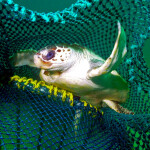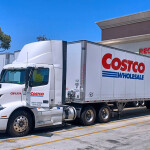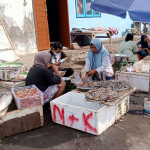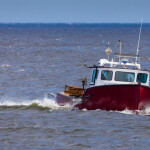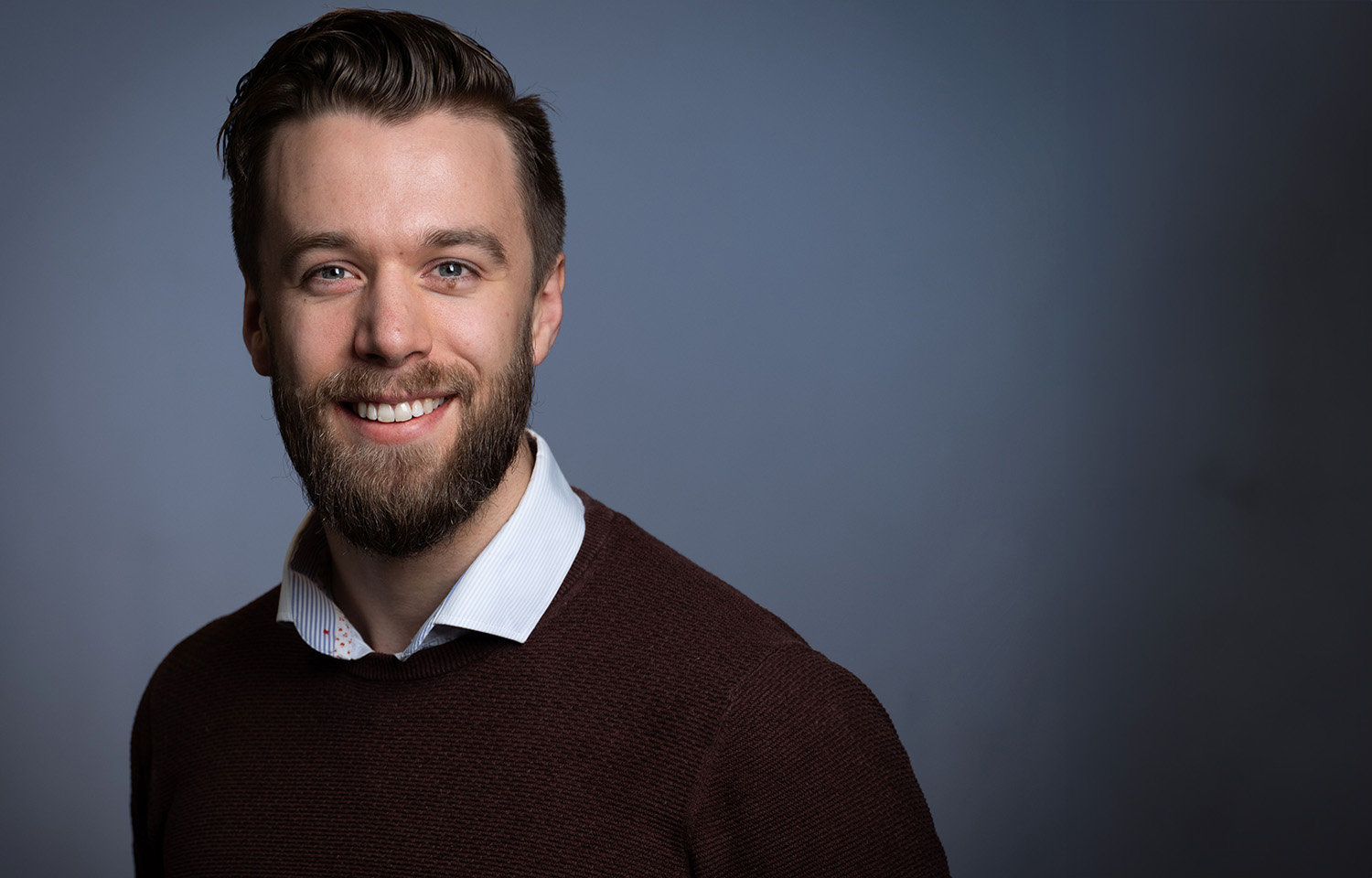Martin Skaug is the Norwegian Seafood Council’s communications director.
After attending Innovation Norway's U.S. and Norway business summit in San Francisco, California, U.S.A., earlier this year, where I was joined by some of Norway's leading aquaculturists, I left wondering why the Norwegian approach to technological innovation isn't more widely adopted in other major fishing markets.
It’s no secret that the Norwegian aquaculture industry stands as a global leader in technological innovation. Often referred to as the “Silicon Valley of fisheries” by many of our technologically savvy aquaculturists and entrepreneurs at the conference, Norway has become the place to be for fishing businesses looking to innovate.
It's ubiquitous among many up-and-coming innovators that there is nowhere quite like Norway when it comes to the adoption of tech and development. While there are unavoidable issues that arise within large markets that are experimenting and growing, the country is an undeniable wellspring of enviable local and international talent.
But, why is this?
Since 1985, Norway's aquaculture industry has experienced substantial growth, achieving an average annual growth rate of 12.5 percent from 1985 to 2020 – the fastest in the world. However, this growth has been accompanied by numerous challenges, possibly as a consequence of this rapid development.
While Norway has ancient roots in traditional fishing practices, the country also has an incredible appetite for change and innovation. The Norwegian aquaculture industry is home to a significant number of tech startups, reflecting the country's commitment to innovation in this sector. As of 2024, Norway boasts several hundreds of aquaculture- and fisheries-related tech startups, including companies developing cutting-edge solutions in areas such as AI-driven fish monitoring, smart feeding systems, and sustainable aquaculture practices.
Take Manolin as an example, a Norwegian-based AI startup using predictive modeling through data harvesting to better understand farming challenges and solve them with mathematical precision. This company recognized the potential data has in making aquaculture more efficient and less demanding of resources. After a few months of market research, the company determined Norway was the ideal place to begin its journey. Initially founded in the United States, Manolin relocated its primary operations to Norway due to the country's abundant resource of structured data.
Norwegian salmon farmers have been collecting data since the 1990s, a practice that was uncommon globally. Many Norwegian farms had computer systems storing data long before other countries' salmon farms even had internet access, let alone sensors, cameras, and digital inventory systems. This well-established infrastructure enabled Manolin to access data that form the foundation of predictive models that have the potential to determine effective genetics, breeding programs, and vaccines. Recently, the company saved a well-known salmon farmer USD 5 million (EUR 4.5 million) in revenue by measuring the performance of a novel sea lice treatment.
The Norwegian government has consistently emphasized the importance of digitalization in general, which was indeed one of the topics covered at the Innovation Norway summit earlier this year – more specifically, data sharing within the aquaculture sector, which is widely considered a must-have to increase success by the Norwegian government. By leveraging advanced technologies and data analytics, other countries can also improve operational efficiency, enhance fish health management, and develop innovative solutions for sustainable growth. Manolin is simply taking that to the next level in Norway.
“Aquaculture is constantly facing novel challenges,” Manolin CEO Tony Chen said. “Whether it’s an issue with variables inside your control or not, farmers are always on the lookout for new roadblocks to production. As a result, there is no other animal-farming industry that has seen as much technological uptake as aquaculture, especially in Norway. Norwegian farmers are always willing to experiment and tinker with their existing ways of doing things to optimize for the future. That’s where we come in: we can help them determine with certainty what is working and what isn't. Our data models, having already been adopted in Norway, will help eliminate guesswork for farmers.”
Now, with Manolin celebrating six years in Norway, it has been able to take farmers' existing data and create models that answer health questions, predict future issues, accelerate scientific discoveries, and, much later down the line, provide risk models that will form the basis of aquacultural insurance – something that’s yet to exist.
“We can’t overstate the importance that Norway has had for our business. Building an ag tech company isn’t easy; in fact, it’s incredibly challenging. When it comes to farmers operating in Norway, they understand that innovation is important while also knowing that results take time – making it the ideal country to pitch and execute new ideas,” Chen said. “That is the reason why Norway has gotten so far ahead in the aquaculture space. It's been this adoption of innovation coupled with regulation. You just don’t see it anywhere else and as quickly as you do with Norwegian salmon.”
Biofeyn, a tech company also based in Norway, has an ambitious vision for the future of aquacultural systems. Operating at the intersection of biotechnology and aquaculture, Biofeyn’s founder, Timothy Bouley, leverages his medical background and expertise in advanced biotechnologies to address pressing issues in animal health. One of the most promising technologies they employ is nano delivery, which encapsulates essential aquafeed compounds within a protective, biodegradable shell. This innovation exponentially enhances the nutritional value and uptake of the feed, thereby boosting fish health.
This method increases resource use efficiency and significantly reduces the amount of feed required, potentially saving large salmon farmers millions annually.
Biofeyn has also developed an oral vaccine that can be incorporated into fish feed pellets, allowing for continuous administration and booster doses throughout the fish's life. This vaccine targets the primary bacteria causing infections, such as Moritella, offering a more efficient and less labor-intensive solution for fish farmers.
Similar to Manolin, Biofeyn’s journey started in Norway because of the country's leading status in global salmon production and their readiness to adopt technological advancements.
“We like to call ourselves a delivery company fundamentally – but instead of delivering an Amazon order to your door, we’re delivering bio-compounds to where they need to be in farmed salmon,” Biofeyn CEO Timothy Bouley. “Within the next five to 10 years, our nanotechnologies will become standard in the industry because it will mean salmon farmers are ensuring optimal health for their fish. The stabilization of nutrients and oral vaccines is not a question of if but when they will be widely adopted, with Norway just being the beginning.”
Part of Norway’s pull for many aquatech startups is that the government is working on simplifying the licensing system for aquaculture activities. Additionally, efforts are being made to enhance the traffic light system, which regulates production capacity based on environmental impact assessments. This traffic light system, which automatically flags any malpractice or lack of green efficiencies to the Norwegian government and keeps fisheries on their toes, instigating more innovation down the line.
Even well-established Norwegian salmon farmers like Nordlaks, which also attended the summit in California, are benefiting from an innovation-centered approach. By continuously researching new ways to advance and upgrade every step of their value chain through technology, Nordlaks has managed to sustain their top-tier salmon farming status while also driving progress in sustainable and ethical practices across the industry. Since its inception in 1989, the company has prioritized research and development, investing hundreds of millions of Norwegian kroner into technological advancements. Currently, Nordlaks employs lasers at its salmon farms to detect and eliminate salmon lice. They’ve also introduced state-of-the-art AI-driven robots that clean nets with minimal disturbance to essential organic materials – all without harmful chemicals.
To become a world leader in aquaculture, Norway has relied on its strict guidelines, close monitoring, and sustained commitment to development. This includes investment from fish farmers each year, in addition to state-driven investments, to fund further research and development.
From our end at the Norwegian Seafood Council (NSC), we are boosting our seafood industry further onto the global stage by investing significantly in marketing and promoting its seafood products. In 2024 alone, the NSC has allocated NOK 483 million (USD 45.6 million, EUR 41.2 million), to promote Norwegian seafood in 27 countries.
Reflecting on the excitement of that inspiring summit, it's clear that a crucial piece of the seafood industry puzzle lies in today's hottest trend: artificial intelligence (AI) and the vast possibilities it offers. To ensure the continuous growth of the seafood sector and maintain the high standards everyone aims for, companies – especially startups – must continue to harness the power of innovation and technology.
With a rich fishing history, government support, and a strong culture of innovation, the presence of such startups in Norway serves as a model that, if applied globally, can have a tremendously positive effect on the international aquaculture scene. Norway aims to continue playing the leading role, but as we all know, every play needs a strong cast. This story has room for more ambitious actors, similar to Biofeyn, Manolin, and Nordlaks. Given the ongoing challenges facing the industry, it seems we’re ready for another hero’s journey to resolve these issues.

